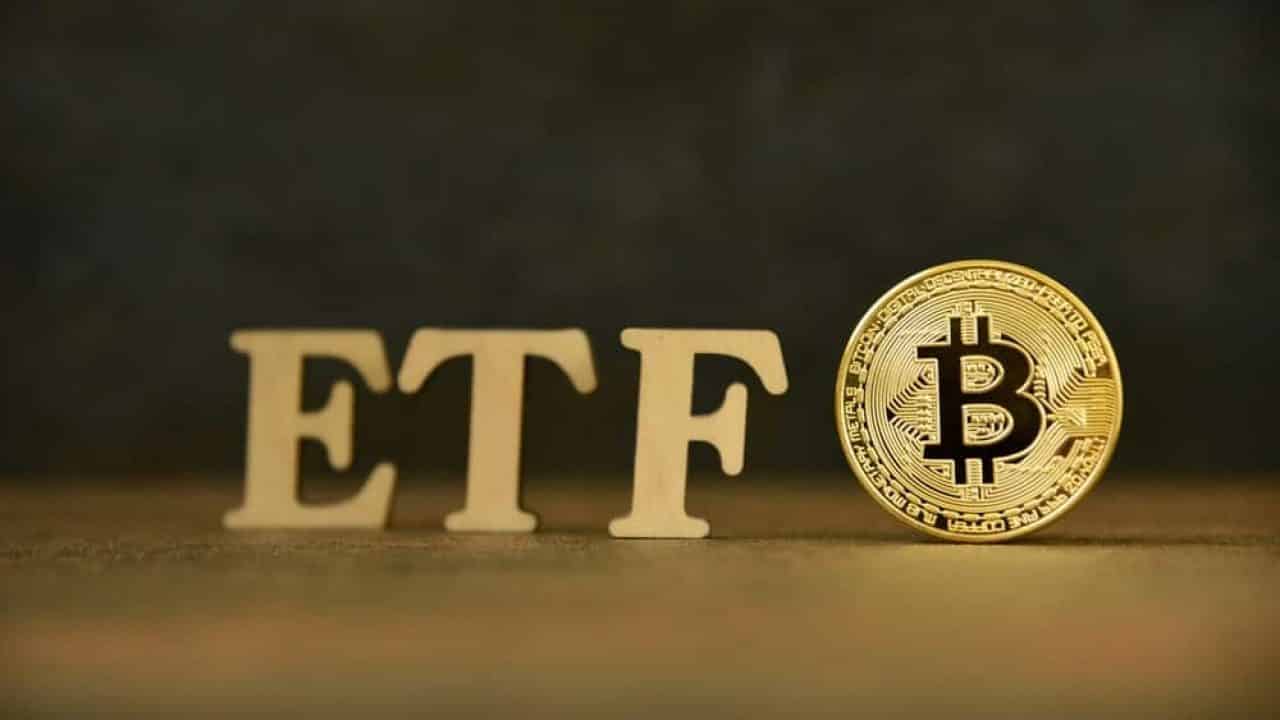What Is an ETF Crypto
An ETF crypto, also known as a cryptocurrency exchange-traded fund, combines the benefits of cryptocurrency investments with the convenience and accessibility of traditional ETFs.
But what exactly is an ETF? An ETF, or exchange-traded fund, is a type of investment fund that trades on stock exchanges, just like individual stocks. It is designed to track the performance of a specific index, commodity, sector, or asset class. ETFs allow investors to diversify their portfolios and gain exposure to a wide range of assets without having to buy individual securities.
Now, let’s dive into the world of crypto. Cryptocurrency is a digital or virtual form of currency that uses cryptography for security. It operates on a decentralized network called a blockchain, which ensures transparency and immutability of transactions.
An ETF crypto combines the features of ETFs and cryptocurrencies, allowing investors to gain exposure to various cryptocurrencies without actually owning them. These ETFs are traded on exchanges just like traditional ETFs, providing a familiar investment avenue for both novice and experienced investors.
One of the key advantages of ETF cryptos is their convenience. They eliminate the need for investors to navigate the complex processes of buying, storing, and managing cryptocurrencies themselves. Instead, investors can buy shares of an ETF crypto and gain exposure to multiple cryptocurrencies through a single investment.
ETF cryptos also offer liquidity, as they can be bought and sold throughout the trading day just like regular stocks. This makes it easier for investors to enter or exit their positions without facing challenges such as delays in executing trades or limited market availability.
Furthermore, ETF cryptos provide diversification benefits. By investing in an ETF crypto, investors gain exposure to a basket of cryptocurrencies, spreading the risk across different assets. This helps mitigate the volatility associated with individual cryptocurrencies, making the investment potentially more stable and less susceptible to drastic price fluctuations.
Overall, ETF cryptos offer a simplified and regulated way to invest in cryptocurrencies. They provide convenience, liquidity, and diversification, making them an attractive option for investors seeking exposure to the world of cryptocurrencies without the complexities and risks involved in direct ownership.
Introduction
The rise of cryptocurrencies in recent years has made them a popular investment choice for many individuals. However, navigating the world of cryptocurrencies can be complex and daunting, especially for those who are unfamiliar with the technology and the risks involved. This is where ETF cryptos come into play, offering a simplified and regulated way to invest in the digital asset class.
An ETF crypto, also known as a cryptocurrency exchange-traded fund, combines the benefits of cryptocurrency investments with the convenience and accessibility of traditional ETFs. ETFs have long been a favored investment vehicle due to their flexibility, diversification, and liquidity. By incorporating cryptocurrencies into the ETF structure, investors can gain exposure to this emerging asset class without the need to directly own and manage individual digital currencies.
With an ETF crypto, investors can enjoy the convenience of buying and selling shares on stock exchanges, just like any other ETF. This eliminates the complexities involved in purchasing, storing, and managing cryptocurrencies themselves. Additionally, ETF cryptos offer the added advantage of providing diversification benefits by including a variety of cryptocurrencies within the fund.
One of the key reasons why ETF cryptos have gained popularity is their regulated nature. Unlike direct investments in cryptocurrencies, which can be subject to regulatory uncertainties and security risks, ETF cryptos operate within the existing framework of financial regulations. This provides investors with a level of reassurance and protection that may be lacking in unregulated cryptocurrency markets.
Another important feature of ETF cryptos is their liquidity. Being traded on stock exchanges, these funds enable investors to buy or sell shares throughout the trading day. This allows for quick and efficient transactions, unlike some cryptocurrencies that may have limited liquidity or trading hours.
Furthermore, ETF cryptos provide a way for investors to gain exposure to the potential upside of the cryptocurrency market while mitigating some of the risks associated with individual digital currencies. By investing in a diversified portfolio of cryptocurrencies, ETF cryptos help to reduce the impact of price volatility and market fluctuations that can occur with individual cryptocurrencies.
In the following sections, we will delve deeper into the specifics of ETF cryptos. We will explore how they work, their advantages over other investment options, the different types available, and the risks that investors should be aware of. By the end of this article, you will have a comprehensive understanding of this innovative investment vehicle and whether it is the right choice for your investment strategy.
Definition of ETF
Before diving into the concept of an ETF crypto, it’s essential to understand what an ETF (exchange-traded fund) is. An ETF is a type of investment fund that is traded on stock exchanges, similar to individual stocks. It is designed to track and replicate the performance of a particular index, sector, commodity, or asset class.
An ETF is composed of a diversified portfolio that represents the underlying assets it aims to track. For example, an ETF tracking the S&P 500 index will hold a basket of stocks that mimics the composition and performance of the index. This allows investors to gain exposure to a wide range of securities through a single investment.
One of the key advantages of ETFs is their flexibility. They can be bought or sold throughout the trading day at market prices, allowing investors to enter or exit positions at any time. This liquidity distinguishes them from mutual funds, which are only priced and traded at the end of the trading day.
Furthermore, ETFs are known for their diversification benefits. By holding a basket of assets, ETFs spread the risk across different securities, reducing the impact of any individual stock or sector on the overall performance of the fund. This diversification helps to mitigate volatility and potential losses.
ETFs also offer transparency, as the composition of the fund’s holdings is disclosed on a regular basis. This enables investors to have a clear understanding of what assets they are invested in and allows for better monitoring and analysis of the fund’s performance.
Additionallly, ETFs are cost-effective investment vehicles. Compared to actively managed funds, ETFs typically have lower expense ratios as they are designed to passively track an index’s performance instead of relying on active portfolio management. Lower expense ratios can potentially lead to higher returns for investors over the long term.
Overall, an ETF is a versatile investment option that combines the benefits of diversification, liquidity, transparency, and cost-effectiveness. It allows investors to gain exposure to a specific index or asset class without directly owning individual securities. Understanding the concept of an ETF is essential in grasping the underlying structure and advantages of an ETF crypto.
Overview of Cryptocurrency
Cryptocurrency has emerged as a revolutionary form of digital or virtual currency that operates outside the traditional banking system. It is based on a technology called blockchain, which combines cryptography and decentralized networks to ensure secure and transparent transactions.
Unlike traditional fiat currencies issued by governments, cryptocurrencies are not controlled by any central authority. This decentralization is one of their defining features, as it removes the need for intermediaries such as banks to facilitate transactions. Instead, cryptocurrencies rely on a peer-to-peer network of computers known as nodes to validate and record transactions on the blockchain.
Bitcoin, introduced in 2009, was the first and most well-known cryptocurrency. Since then, thousands of different cryptocurrencies, often referred to as altcoins, have been created, each with its own unique features and purposes.
Cryptocurrencies are based on cryptographic algorithms that provide security and integrity to the transactions. These algorithms ensure that transactions are verified, authenticated, and recorded in a tamper-proof manner on the blockchain. This gives users confidence that their transactions cannot be altered or manipulated.
One of the key advantages of cryptocurrencies is their potential for anonymity. While transactions are recorded on the blockchain and are publicly visible, the identities of the individuals involved in the transactions are often pseudonymous. This offers a level of privacy to users, although it has also raised concerns about the use of cryptocurrencies for illicit activities.
Another feature that distinguishes cryptocurrencies is their scarcity. Many cryptocurrencies have a limited supply, ensuring that they cannot be easily inflated like traditional fiat currencies. This scarcity, combined with increasing demand, has contributed to the significant price appreciation of certain cryptocurrencies over time.
Cryptocurrencies are used for various purposes, ranging from simple peer-to-peer transactions to more complex applications such as decentralized finance (DeFi) and smart contracts. They are also viewed as a potential store of value and a hedge against inflation, similar to gold.
However, it’s important to note that investing in cryptocurrencies carries risks. The volatility of cryptocurrency prices can lead to substantial gains, but also significant losses. Furthermore, the regulatory landscape surrounding cryptocurrencies is still evolving, and there are concerns about security vulnerabilities and potential fraud in the crypto market.
Despite these challenges, the growing popularity and adoption of cryptocurrencies have made them an intriguing investment option for individuals and institutions alike. Their underlying technology and potential for innovation continue to drive interest in the cryptocurrency market, making it a dynamic and ever-evolving space.
What Is an ETF Crypto
An ETF crypto, also known as a cryptocurrency exchange-traded fund, combines the benefits of cryptocurrency investments with the convenience and accessibility of traditional ETFs. It is a type of investment fund that aims to track the performance of a specific cryptocurrency index, such as Bitcoin, Ethereum, or a basket of different digital currencies.
Similar to traditional ETFs, an ETF crypto is traded on stock exchanges, allowing investors to buy and sell shares throughout the trading day at market prices. This differs from direct cryptocurrency investments, where individuals would have to navigate digital exchanges and wallets to buy and hold cryptocurrencies themselves.
By investing in an ETF crypto, individuals can gain exposure to the potential upside of the cryptocurrency market without having to deal with the complexities and risks of direct cryptocurrency ownership. Rather than holding and managing individual digital currencies, investors can hold shares of an ETF crypto, which represent proportionate ownership in the underlying cryptocurrency assets held by the fund.
ETF cryptos offer several advantages over direct cryptocurrency investments. Firstly, they provide a simplified and regulated way to access the cryptocurrency market. The regulatory framework surrounding ETFs adds a layer of oversight and protection for investors, enhancing transparency and security.
Furthermore, ETF cryptos facilitate diversification by holding a basket of cryptocurrencies within the fund. This diversification helps spread the investment risk across multiple assets, reducing the potential impact of volatility associated with any single cryptocurrency. It can offer a more stable investment option for those seeking exposure to the cryptocurrency market without putting all their eggs in one basket.
ETF cryptos also provide liquidity and flexibility, as investors can buy or sell shares at any time during market hours. This allows for easier and quicker access to their investment capital, compared to the potential challenges of selling individual cryptocurrencies on digital exchanges. The liquidity of ETF cryptos ensures that investors have the ability to enter or exit their positions without significant friction.
Moreover, the pricing and valuation of ETF cryptos are typically transparent and based on the net asset value (NAV) of the underlying cryptocurrency assets. This transparency allows investors to track the performance of their investment accurately and make informed decisions.
Overall, an ETF crypto offers individuals a regulated, diversified, and accessible way to invest in cryptocurrencies. It combines the benefits of traditional ETFs, such as convenience, liquidity, and transparency, with the potential growth and returns of the cryptocurrency market. However, it’s important to note that investing in any asset class carries risks, and individuals should carefully evaluate their investment goals and risk tolerance before investing in ETF cryptos.
Advantages of ETF Crypto
ETF cryptos, or cryptocurrency exchange-traded funds, offer numerous advantages over traditional direct investments in cryptocurrencies. These advantages make them an attractive option for investors seeking exposure to the cryptocurrency market while minimizing some of the risks and complexities associated with individual digital currencies.
One of the key advantages of ETF cryptos is convenience. Investing in an ETF crypto eliminates the need for investors to navigate the intricacies of cryptocurrency exchanges and wallets. Instead, investors can buy and sell shares of an ETF crypto directly on stock exchanges, just like any other publicly traded security. This streamlined process makes it more accessible for investors to participate in the cryptocurrency market, especially for those who may be unfamiliar or uncomfortable with the technical aspects of cryptocurrency ownership and storage.
Liquidity is another significant advantage of ETF cryptos. Unlike some individual cryptocurrencies that may have limited trading hours or liquidity, ETF cryptos can be bought and sold throughout the trading day at market prices. This allows investors to enter or exit their positions quickly and efficiently, providing a level of flexibility that may not be available in direct cryptocurrency investments.
Diversification is a crucial benefit of ETF cryptos. By holding a basket of cryptocurrencies within the fund, ETF cryptos provide investors with exposure to a range of digital assets. This diversification helps spread the investment risk across multiple cryptocurrencies, reducing the impact of any single currency on the overall performance of the fund. By mitigating the volatility associated with individual cryptocurrencies, ETF cryptos can offer a more stable investment option for those seeking exposure to the cryptocurrency market.
Regulation is another advantage that ETF cryptos offer. Traditional ETFs operate within the existing framework of financial regulations, providing investors with a sense of security and oversight. This regulatory framework helps protect investors from potential fraud and ensures that ETF cryptos adhere to certain standards and reporting requirements. By investing in a regulated investment vehicle, investors can have greater confidence in the legitimacy and transparency of their investments.
Transparency is a key aspect of ETF cryptos. The pricing and valuation of ETF cryptos are typically based on the net asset value (NAV) of the underlying cryptocurrency assets. This transparency enables investors to track the performance of their investments accurately and make informed decisions. Additionally, ETF cryptos often disclose the composition of the fund’s holdings, allowing investors to have a clear understanding of the cryptocurrencies they are invested in.
Expense efficiency is another advantage that ETF cryptos offer. As compared to actively managed funds or direct cryptocurrency investments, ETF cryptos generally have lower expense ratios. This cost-effectiveness can potentially lead to higher returns for investors over the long term, as lower expenses mean more of the fund’s returns can be retained by investors.
In summary, ETF cryptos offer convenience, liquidity, diversification, regulation, transparency, and expense efficiency. These advantages make them an attractive investment option for individuals seeking exposure to the cryptocurrency market, providing a regulated and accessible means to participate in the potential growth and returns of digital assets.
How ETF Crypto Works
ETF cryptos, or cryptocurrency exchange-traded funds, operate on a structure similar to traditional ETFs but with a focus on tracking the performance of cryptocurrencies. Understanding how ETF cryptos work is essential for investors looking to gain exposure to the cryptocurrency market in a simplified and regulated manner.
ETF cryptos are created and managed by asset management companies. These companies create a fund that holds a diversified portfolio of cryptocurrencies, or in some cases, a specific index or basket of digital assets. The fund’s objective is to track the performance of the underlying cryptocurrency assets.
In order to create an ETF crypto, the asset management company creates shares of the fund, which represent ownership in the underlying cryptocurrency assets. These shares are made available for purchase on stock exchanges, allowing investors to buy and sell them just like any other publicly traded security.
When investors buy shares of an ETF crypto, the fund’s manager uses the proceeds from the sale of those shares to purchase the underlying cryptocurrency assets in the market. The fund’s holdings are designed to closely replicate the performance of the target index or basket of cryptocurrencies.
The fund’s manager is responsible for maintaining the balance and proportionality of the underlying assets within the fund. This ensures that the ETF crypto accurately reflects the performance of the chosen cryptocurrency assets. The manager may periodically rebalance the fund’s holdings to adjust for changes in the target index or to maintain the desired level of diversification.
The pricing of ETF cryptos is based on the net asset value (NAV) of the fund. The NAV is calculated by dividing the total value of the underlying cryptocurrency assets held by the fund by the total number of shares outstanding. This provides investors with a transparent valuation of the fund’s underlying assets.
Liquidity is a crucial aspect of ETF cryptos. Investors can buy or sell shares throughout the trading day at market prices. This allows for quick and efficient transactions, similar to investing in individual stocks. The liquidity of ETF cryptos ensures that investors have the ability to enter or exit their positions with relative ease.
In summary, ETF cryptos are created and managed by asset management companies to track the performance of cryptocurrencies. They allow investors to gain exposure to the cryptocurrency market through shares that represent ownership in the underlying cryptocurrency assets held by the fund. The fund’s manager is responsible for maintaining the balance of the underlying assets and may periodically adjust the holdings to reflect changes in the target index or to ensure diversification. The pricing of ETF cryptos is based on the NAV of the fund, and investors can buy or sell shares throughout the trading day.
Types of ETF Crypto
There are several different types of ETF cryptos available in the market, each with its own unique characteristics and investment strategies. Understanding the different types can help investors choose the ETF crypto that aligns with their investment goals and risk tolerance.
1. Single-Currency ETF Crypto: This type of ETF crypto focuses on tracking the performance of a specific cryptocurrency, such as Bitcoin or Ethereum. It provides investors with exposure to the price movements of a single digital currency, allowing them to participate in the potential growth or decline of that particular cryptocurrency.
2. Multi-Currency ETF Crypto: This type of ETF crypto holds a diversified portfolio of multiple cryptocurrencies. It aims to provide investors with exposure to a broader range of digital assets, helping to spread the investment risk across different cryptocurrencies. Multi-currency ETF cryptos can include a mix of well-established cryptocurrencies and emerging altcoins.
3. Index-Based ETF Crypto: These ETF cryptos track the performance of a specific cryptocurrency index. The index can focus on a particular subset of cryptocurrencies, such as large-cap or small-cap cryptocurrencies, or it can encompass a broader market representation. Index-based ETF cryptos enable investors to gain exposure to a diverse range of cryptocurrencies without having to individually select and manage the assets.
4. Actively Managed ETF Crypto: Unlike index-based ETF cryptos that passively track a predetermined index, actively managed ETF cryptos are managed by professional fund managers who actively select and manage the underlying cryptocurrency assets. The fund managers aim to outperform the market or achieve specific investment objectives by actively adjusting the fund’s holdings based on market trends and their investment strategies.
5. Thematic ETF Crypto: Thematic ETF cryptos focus on specific themes or sectors within the cryptocurrency market. For example, there may be ETF cryptos that concentrate on decentralized finance (DeFi), blockchain technology, or green cryptocurrencies. These thematic ETF cryptos allow investors to target their investments in areas they believe have strong growth potential or align with their personal interests.
6. Leveraged or Inverse ETF Crypto: Leveraged ETF cryptos use derivatives to amplify the returns of the underlying cryptocurrency assets. These ETFs aim to provide a multiple (e.g., 2x or 3x) of the daily or monthly performance of the tracked cryptocurrency index. On the other hand, inverse ETF cryptos seek to deliver the opposite daily or monthly performance of the tracked index, enabling investors to profit from a decline in cryptocurrency prices.
It’s important for investors to carefully research and understand the features and risks associated with each type of ETF crypto. Factors to consider include the fund’s investment strategy, expense ratios, tracking error, liquidity, and the experience and reputation of the fund manager. By analyzing these factors, investors can choose the type of ETF crypto that best fits their investment objectives and risk tolerance.
Comparison with Other Investment Options
When considering investing in the cryptocurrency market, individuals have various options to choose from. Let’s compare ETF cryptos with other investment options to understand their advantages and differences.
Direct Cryptocurrency Ownership: One common approach is to directly purchase and hold cryptocurrencies, such as Bitcoin or Ethereum, in digital wallets. This option provides full ownership and control over the digital assets. However, it requires individuals to navigate cryptocurrency exchanges, manage private keys, and ensure the security of their holdings. ETF cryptos offer a more convenient alternative, allowing investors to gain exposure to cryptocurrencies without the complexities and risks associated with direct ownership.
Individual Cryptocurrency Stocks: Another option is investing in individual stocks of companies involved in the cryptocurrency industry, such as cryptocurrency mining firms or blockchain technology companies. While this approach provides exposure to the cryptocurrency market, it is subject to the individual company’s performance and carries specific company-level risks. ETF cryptos, on the other hand, provide diversified exposure to the overall cryptocurrency market, reducing the idiosyncratic risk associated with individual stocks.
Crypto Mutual Funds and Managed Portfolios: Crypto mutual funds and managed portfolios are actively managed investment vehicles that invest in a collection of cryptocurrencies and assets. These funds differ from ETF cryptos, as they are typically not traded on stock exchanges, making them less liquid and potentially subject to higher fees and minimum investment requirements. Additionally, crypto mutual funds often require a lock-up period, limiting investors’ ability to quickly exit their positions. ETF cryptos offer the advantage of liquidity, lower expenses, and the ability to buy and sell shares throughout the trading day.
Futures and Options Contracts: Futures and options contracts allow individuals to speculate on the future price movements of cryptocurrencies without owning the underlying assets. These derivative products can provide leverage but also carry significant risk due to their complexity and potential for substantial losses. ETF cryptos offer a simpler and more regulated investment option, suitable for individuals seeking exposure to the cryptocurrency market without the complexity and risks associated with derivatives.
Traditional Stocks and Bonds: Traditional investment options, such as stocks and bonds, offer diversification benefits and have a long history in the investment world. However, they may not directly capture the potential growth and returns of the cryptocurrency market. ETF cryptos provide a way to incorporate the digital asset class into a diversified investment portfolio, enabling investors to participate in the cryptocurrency market’s potential while maintaining exposure to traditional investment options.
It is important for investors to assess their investment goals, risk tolerance, and understanding of the cryptocurrency market when comparing these investment options. ETF cryptos can be an attractive choice for individuals seeking regulated, convenient, and diversified exposure to the cryptocurrency market without the complexities and risks associated with direct ownership or other investment vehicles.
ETF Crypto vs Traditional ETFs
ETF cryptos, or cryptocurrency exchange-traded funds, differ from traditional ETFs in several aspects. While they share similarities in their structure and investment goals, there are key differences that investors should be aware of when comparing the two.
Underlying Assets: The most significant difference between ETF cryptos and traditional ETFs lies in their underlying assets. Traditional ETFs typically track conventional investments such as stocks, bonds, or commodities. In contrast, ETF cryptos aim to replicate the performance of cryptocurrencies or cryptocurrency indexes. This difference in underlying assets reflects the contrasting risk profile and potential return dynamics of the two types of ETFs.
Regulation: Traditional ETFs operate within established regulatory frameworks, subject to the rules and oversight of financial authorities. On the other hand, the regulatory landscape for ETF cryptos is still evolving, varying across jurisdictions. While some ETF cryptos may fall under existing regulatory frameworks for ETFs, others may face unique regulatory challenges specific to the cryptocurrency market. The level of regulation provides different degrees of investor protection and transparency for the two types of ETFs.
Market Accessibility: Traditional ETFs are widely accessible to investors through brokerage accounts and can be traded on major stock exchanges. ETF cryptos also trade on stock exchanges, making them accessible to investors with brokerage accounts. However, the availability and trading volume of ETF cryptos may vary, depending on the specific cryptocurrency market and exchange liquidity. This can impact the ease of buying and selling shares compared to traditional ETFs that have more established market presence.
Volatility and Risk Profile: Cryptocurrencies are known for their high volatility, leading to potential rapid price fluctuations. As a result, ETF cryptos generally exhibit higher volatility compared to traditional ETFs. The risk profile of ETF cryptos is influenced by the inherent price volatility and market dynamics of the cryptocurrency market. Investors considering ETF cryptos should be prepared for potential price swings and increased market risk compared to traditional ETFs.
Investor Base and Investment Strategy: Traditional ETFs cater to a broad range of investors, from retail investors to institutional investors. Their investment strategies can vary from passive index tracking to actively managed portfolios. ETF cryptos, being relatively newer investment products, may primarily attract investors interested in the cryptocurrency market or seeking specific exposure to digital assets. The investment strategy of ETF cryptos may mainly focus on tracking cryptocurrency prices or indexes, with limited actively managed options currently available.
Diversification: Both traditional ETFs and ETF cryptos offer diversification benefits, but they differ in the assets that contribute to this diversification. Traditional ETFs achieve diversification by holding a range of stocks, bonds, or other traditional assets. ETF cryptos achieve diversification by holding various cryptocurrencies or tracking cryptocurrency indexes. The choice between the two types of diversification depends on the investor’s risk appetite, investment objectives, and beliefs about the potential of traditional assets versus cryptocurrencies.
Ultimately, the decision between investing in an ETF crypto or a traditional ETF depends on an individual’s investment goals, risk tolerance, and understanding of the underlying assets. ETF cryptos offer a unique avenue for gaining exposure to the cryptocurrency market, whereas traditional ETFs provide access to more established asset classes. Investors should carefully evaluate the advantages, risks, and regulatory considerations of each type of ETF before making an investment decision.
Risks Associated with ETF Crypto
While ETF cryptos offer potential opportunities for investors looking to gain exposure to the cryptocurrency market, they also come with certain risks that individuals should be aware of before investing. Understanding these risks is crucial to making informed investment decisions. Here are some of the risks associated with ETF cryptos:
Volatility: Cryptocurrencies are known for their high price volatility. This volatility can result in substantial price swings in ETF cryptos, leading to potential gains or losses for investors. Fluctuations in cryptocurrency prices can be influenced by various factors, including market sentiment, regulatory developments, technological advancements, and overall market conditions. Investors should be prepared for the inherent volatility of the cryptocurrency market when considering ETF cryptos.
Regulatory Risks: The regulatory landscape surrounding cryptocurrencies is still evolving and can vary across jurisdictions. Uncertainties around regulations can impact the operations and trading of ETF cryptos. Regulatory actions or changes in regulations can affect the liquidity, valuation, and overall performance of ETF cryptos. Investors need to stay updated on the regulatory environment and assess the potential impact on their investments.
Cryptocurrency Market Risks: ETF cryptos are directly influenced by the performance and risks associated with the underlying cryptocurrencies they track. The cryptocurrency market is susceptible to various factors, including cybersecurity threats, hacking incidents, market manipulation, and regulatory changes. These risks can lead to adverse impacts on the value and stability of cryptocurrency holdings, thereby affecting the performance of ETF cryptos.
Liquidity Risks: While ETF cryptos trade on stock exchanges, the liquidity of these funds may vary depending on the specific cryptocurrency market and trading volume. Limited liquidity can impact investors’ ability to buy or sell shares at desired prices, potentially leading to higher transaction costs or difficulty in executing trades. Investors should consider the liquidity of ETF cryptos and understand the potential challenges associated with buying or selling shares.
Counterparty Risks: ETF cryptos involve multiple parties, including the fund issuer, custodians, and authorized participants. Counterparty risks arise if any of these parties fail to fulfill their obligations. For example, if the custodian responsible for holding the underlying cryptocurrency assets faces security breaches or insolvency, it could impact the value and security of the fund’s assets. Investors should assess the reputation and financial stability of the involved parties to mitigate counterparty risks.
Tracking Error: ETF cryptos aim to replicate the performance of the underlying cryptocurrency assets or indexes. However, due to various factors such as fees, rebalancing, and trading inefficiencies, ETF cryptos may not perfectly track the performance of the targeted assets or indexes. Differences between the ETF crypto’s performance and the actual cryptocurrency market performance can result in tracking errors, potentially leading to deviations in returns for investors.
Loss of Private Keys: Direct ownership of cryptocurrencies requires individuals to hold and safeguard their private keys or access codes. Loss of private keys can result in the permanent loss of access to the associated cryptocurrency holdings. However, with ETF cryptos, individuals do not have direct ownership of the underlying cryptocurrencies, thereby mitigating the risk of losing private keys. Nevertheless, individuals need to be cautious with the security of their brokerage accounts and ensure proper safeguards are in place.
It’s important for investors to carefully evaluate these risks and consider their risk tolerance, investment horizon, and financial goals before investing in ETF cryptos. Diversification, conducting thorough research, and staying informed about market developments can mitigate some of these risks. Moreover, consulting with a financial advisor who specializes in the cryptocurrency market can provide valuable insights and guidance.
Conclusion
ETF cryptos, or cryptocurrency exchange-traded funds, offer a regulated and convenient way for investors to gain exposure to the cryptocurrency market. By combining the benefits of cryptocurrency investments with the structure and accessibility of traditional ETFs, ETF cryptos provide individuals with various advantages, including convenience, liquidity, diversification, regulation, transparency, and expense efficiency. These advantages make them an attractive option for investors looking to participate in the potential growth and returns of digital assets.
However, it’s essential to consider the risks associated with ETF cryptos. These risks include volatility, regulatory uncertainties, market risks, liquidity concerns, counterparty risks, tracking errors, and the responsibility of securing private keys for direct cryptocurrency ownership. Understanding and assessing these risks is crucial for making informed investment decisions.
Comparing ETF cryptos with other investment options, such as direct cryptocurrency ownership, traditional ETFs, individual cryptocurrency stocks, and futures contracts, can help investors determine the most suitable approach for their investment goals and risk tolerance.
We explored the different types of ETF cryptos available, including single-currency and multi-currency ETFs, index-based ETFs, actively managed ETFs, thematic ETFs, and leveraged or inverse ETFs. Each type offers its own unique features and investment strategies, allowing investors to choose the ETF crypto that aligns best with their particular investment objectives.
Investing in ETF cryptos carries both risks and rewards. It’s important for individuals to carefully evaluate their investment goals, risk tolerance, understanding of the cryptocurrency market, and the associated risks before diving into ETF cryptos. Conducting thorough research, staying informed about market developments, and consulting with a trusted financial advisor can help investors navigate the complexities of the cryptocurrency market and make sound investment decisions.
Overall, ETF cryptos provide a simplified and regulated avenue for individuals to access the world of cryptocurrencies and potentially benefit from their growth. They offer an alternative for investors who desire exposure to the cryptocurrency market but prefer the convenience, security, and diversification benefits that ETFs provide. With careful consideration and risk management, ETF cryptos can be a valuable addition to an investment portfolio, complementing traditional investment options and providing potential opportunities in the dynamic and evolving cryptocurrency market.

























